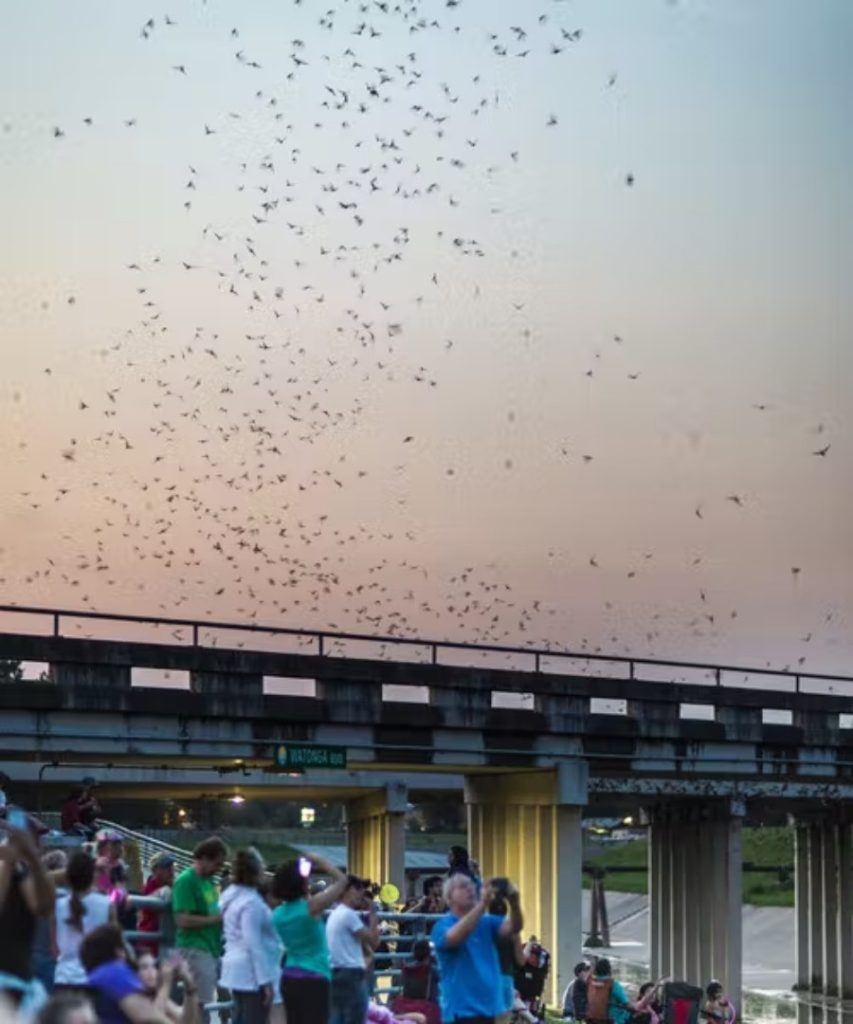October is the time of year we begin to see the signs of fall and anticipate pumpkin carving, trick-or-treating and scary movies. It’s also the time of year where we recognize the importance of a small flying mammal, the bat. Bat week is an annual, international recognition week (October 24th to October 31st) to celebrate the many contributions bats make that enrich people’s lives.
Bats are amazing animals. Not only are they the only mammal that can truly fly, but they are vital to the health of our environment. Each night, thousands of bats emerge from their roosting spot to provide ecological services to Houstonians. Bats eat tons of insects, and some pollinate flowers and help spread seeds that grow new plants and trees. Another amazing fact is that bats drink water while flying; an important feature that Houston’s bayou system provides in return.

There are 33 different species of bats that call Texas their home. The most common bat is the Mexican free-tailed bat that often resides under highway bridges, much like the population under the Watonga crossover bridge north of TC Jester Park. Bridge colonies are often maternal colonies made up of females who will later (around June) give birth to new young babies, called pups. One adult female gives birth to one pup.
The Bayou Greenways offer a great opportunity to witness bat colonies emerging at dusk. Known bat colonies live on White Oak Bayou, Sims Bayou and Halls Bayou. Houston Parks Board has installed bat houses along the Bayou Greenway system. These bat houses provide a home for mainly male bats. These fraternal colonies help establish a foothold in the Houston landscape to keep these important animals safe. Crossover bridges along the bayous are identified and monitored for bats and the information is passed onto Biologists with Texas Parks and Wildlife. After Hurricane Harvey, all known bridges continued to have bats living in them.
Bats also migrate each year. As the first cold fronts begin to arrive in Texas around late October to mid-November, bats will migrate south to caves in Mexico. They will spend their winters there but will return to the Houston area in February.
As the Bayou Greenways expand, Houston Parks Board will continue to provide bat houses and monitor the health of these magnificent flying mammals. After all, the Bayou Greenways are for both people and animals.
BAT FACTS
Bats drink water while they fly, so an open source of fresh water is important.
A single bat can fly up to 100 miles each night in search of food and can fly up to 60 miles an hour.
Bats can fly up to 10,000 feet in the air.
A single bat can eat up to 1,200 mosquito-sized insects every hour, and each bat usually eats 6,000 to 8,000 insects each night.
Mexican Free-tailed bats are on average 3.5 inches in length and have a wingspan of 11 inches. They weight approximately 12.3 grams or 0.43 ounces.
Bats use echolocation to find their food while flying and are not truly blind.
Bats can live up to 18 years.
